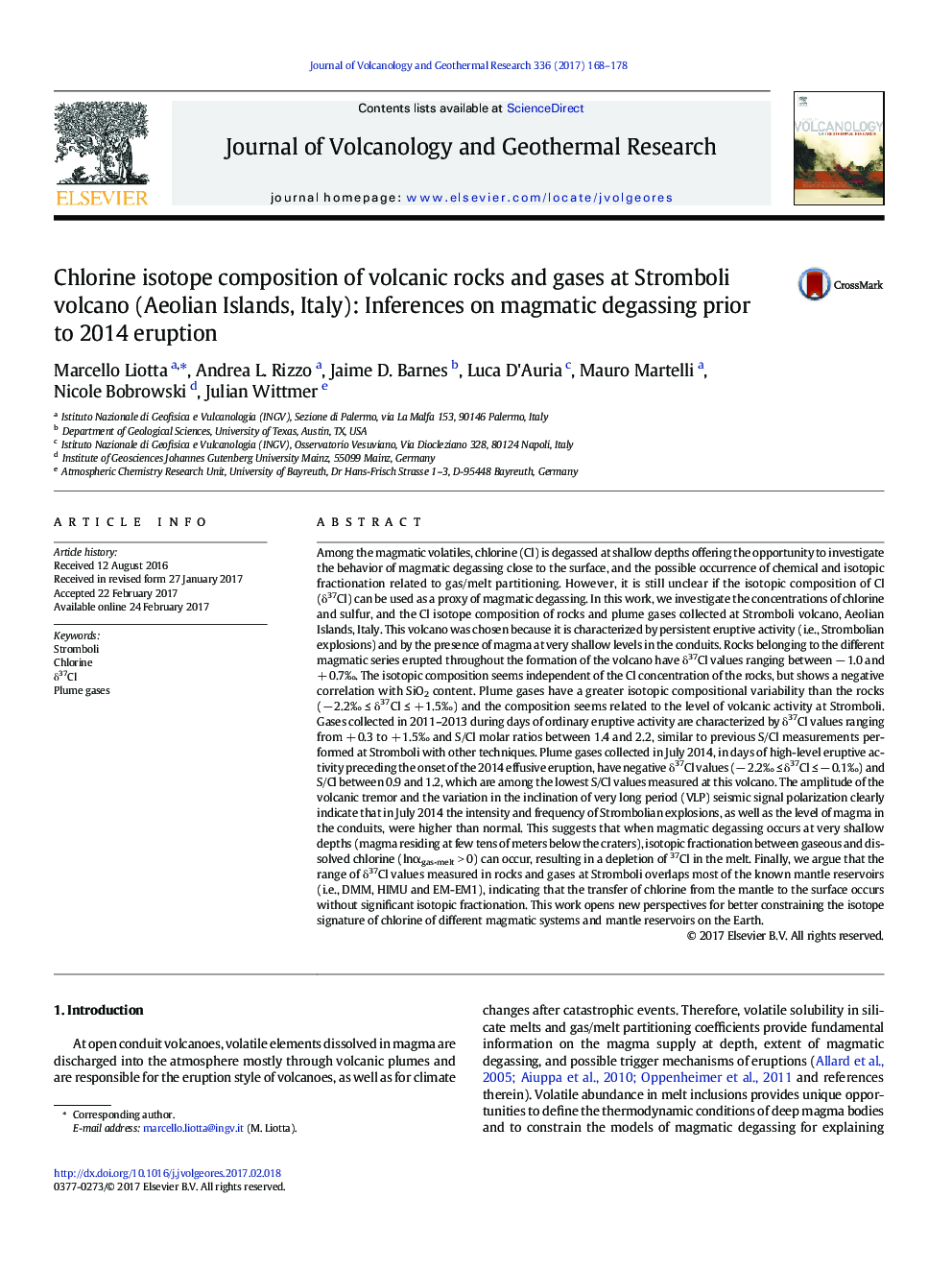| کد مقاله | کد نشریه | سال انتشار | مقاله انگلیسی | نسخه تمام متن |
|---|---|---|---|---|
| 5783864 | 1638287 | 2017 | 11 صفحه PDF | دانلود رایگان |
- Rocks have δ37Cl values ranging between â 1.0 and + 0.7â°.
- Plume gases have δ37Cl values ranging between â 2.2â° and + 1.5â°.
- Isotopic fractionation between gaseous and dissolved chlorine (lnαgas-melt > 0) can happen.
Among the magmatic volatiles, chlorine (Cl) is degassed at shallow depths offering the opportunity to investigate the behavior of magmatic degassing close to the surface, and the possible occurrence of chemical and isotopic fractionation related to gas/melt partitioning. However, it is still unclear if the isotopic composition of Cl (δ37Cl) can be used as a proxy of magmatic degassing. In this work, we investigate the concentrations of chlorine and sulfur, and the Cl isotope composition of rocks and plume gases collected at Stromboli volcano, Aeolian Islands, Italy. This volcano was chosen because it is characterized by persistent eruptive activity (i.e., Strombolian explosions) and by the presence of magma at very shallow levels in the conduits. Rocks belonging to the different magmatic series erupted throughout the formation of the volcano have δ37Cl values ranging between â 1.0 and + 0.7â°. The isotopic composition seems independent of the Cl concentration of the rocks, but shows a negative correlation with SiO2 content. Plume gases have a greater isotopic compositional variability than the rocks (â 2.2â°Â â¤Â δ37Cl â¤Â + 1.5â°) and the composition seems related to the level of volcanic activity at Stromboli. Gases collected in 2011-2013 during days of ordinary eruptive activity are characterized by δ37Cl values ranging from + 0.3 to + 1.5â° and S/Cl molar ratios between 1.4 and 2.2, similar to previous S/Cl measurements performed at Stromboli with other techniques. Plume gases collected in July 2014, in days of high-level eruptive activity preceding the onset of the 2014 effusive eruption, have negative δ37Cl values (â 2.2â°Â â¤Â δ37Cl â¤Â â 0.1â°) and S/Cl between 0.9 and 1.2, which are among the lowest S/Cl values measured at this volcano. The amplitude of the volcanic tremor and the variation in the inclination of very long period (VLP) seismic signal polarization clearly indicate that in July 2014 the intensity and frequency of Strombolian explosions, as well as the level of magma in the conduits, were higher than normal. This suggests that when magmatic degassing occurs at very shallow depths (magma residing at few tens of meters below the craters), isotopic fractionation between gaseous and dissolved chlorine (lnαgas-melt > 0) can occur, resulting in a depletion of 37Cl in the melt. Finally, we argue that the range of δ37Cl values measured in rocks and gases at Stromboli overlaps most of the known mantle reservoirs (i.e., DMM, HIMU and EM-EM1), indicating that the transfer of chlorine from the mantle to the surface occurs without significant isotopic fractionation. This work opens new perspectives for better constraining the isotope signature of chlorine of different magmatic systems and mantle reservoirs on the Earth.
Journal: Journal of Volcanology and Geothermal Research - Volume 336, 15 April 2017, Pages 168-178
